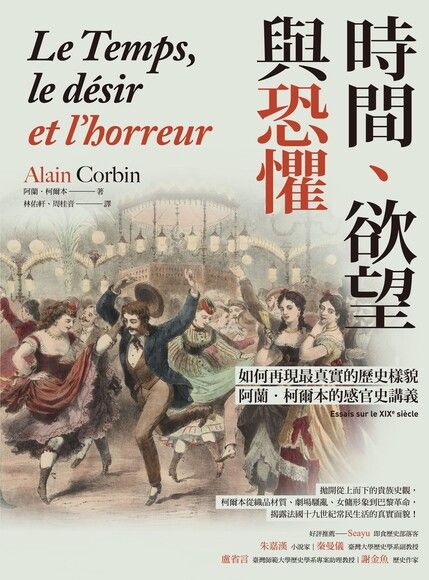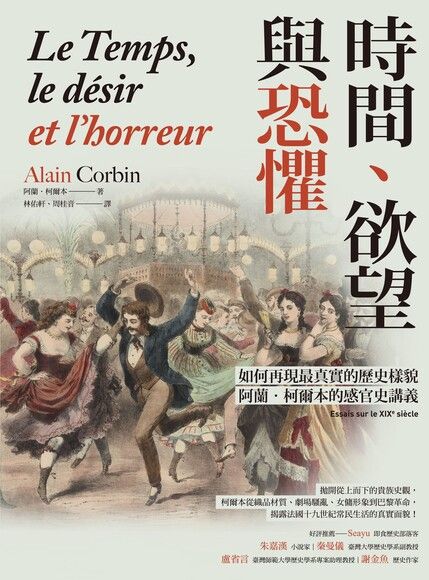1
/
of
1
Time, Desire and Fear
Time, Desire and Fear
Regular price
MOP$160.00
Regular price
Sale price
MOP$160.00
Unit price
/
per
Couldn't load pickup availability
How do different time markings and interpretations change people's living habits and switch the colors of the seasons?
What kind of class reproduction and distinction customs are symbolized by the colorful patterns of the linen fabric?
Why are housemaids both "the bourgeoisie's closest outsiders" and "the proletariat's Trojan horse"?
How did the capital Paris transform from the crowds of people during the Revolution to the joy and enjoyment of the Belle Epoque?
"The greatest little book" by Alan Colburn, a giant in the history of the contemporary senses!
Thirteen exquisite essays describe the life of ordinary French people in the 19th century, where joy and blood danced together.
From the entertainment venue, the theater, the laundry to the guillotine, desire and fear flow and sway in time!
The study of social relations develops to its deepest level: the level of the organic whole.
Because of the distance between different social classes and the intensity of their antagonisms,
These body spaces filled with dragons and snakes burst out with disgust and desire at the same time.
In this theater of the absurd, reverie penetrates so deeply into actual daily experience,
Trying to distinguish reality from fantasy at all costs may be in vain.
If the investigation and research goes back to the past, the customary behavior at that time must be considered.
It draws the line between what is perceived and what is not perceived;
It is also necessary to understand the norms and standards at that time.
It determines the proportion between "expressible things" and "unspeakable things".
The historian can never fully identify some innovation in feeling that he suddenly discovered while studying a document.
Does it represent a change in the emotional system and the way of using the senses, or is it just a new rhetorical form?
So that the feelings that already exist can finally be described concretely.
The spread and popularization of these new words will also shape people's speech and behavior.
──Alain Corbin
In this "Collection of Starting Points" for nineteenth-century studies, Alan Colburn proposes a series of new thoughts and detailed analyzes on time, body, desire, and fear, reshaping our way of gazing at the nineteenth century. It restores the true appearance of this era distorted by "wrong illusions": "color" and "smell" appear on the stage of history, and the entanglement of physiological anxiety and the sex industry constitutes the root of love and hate in daily life. What path will desire follow under the grip of censorship? Why is it that a laundress's body inspires men's fantasies, while a maid's body is regarded as a "Trojan horse of the proletariat" and is repeatedly distrusted? Can the live commotion of the theater audience trigger social unrest and disputes and bitter struggles between political factions? Paris, the crowded capital during the revolutionary period, transformed into a brand new modern and clean appearance overnight after cleaning up the blood stains on the road?
Colburn continues to pay attention to all the marks that inscribe every event in the structure of daily life, and does not allow himself to be blocked by established impressions and perceptions. As a result, the secrets of this century will have to intersect closely at the crossroads of "time, desire and fear." He advocates the pursuit of "passed emotions and sensory perceptions", constantly carves out a set of rigorous and dense narrative analysis, painstakingly studies various "social imaginations", and invites readers to jointly create a history of representation (histoire des représentations). , unraveling the tangle of reality and imagination: from fabric materials, theater riots, images of maids to blood-soaked revolutionary Paris, it explores people's deepest sensory experiences and reveals the twists and turns of the life history of ordinary people in France in the 19th century!


